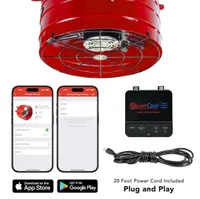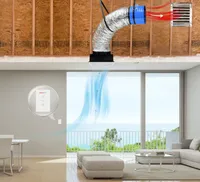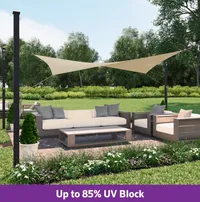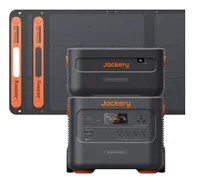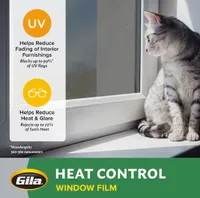Five Home Upgrades for Surviving Record-Breaking Heat
With global temperatures expected to hover at record highs for years to come, now’s the time to upgrade your home for long-term heat resilience.

Summers have been oppressively hot, and that’s not about to change anytime soon. If you’re thinking about making home upgrades for extreme heat, now may be the perfect time.
According to the World Meteorological Organization, the next five years are likely to bring temperatures at or near record-high levels. There’s an 80% chance that at least one of the next five years will become the warmest on record, breaking the record-setting temperatures reached in 2024. Plus, there’s a 70% chance that the average warming for 2025 to 2029 will be more than 1.5 degrees Celsius, or 34.7 degrees Fahrenheit.
That means we’ll need to prepare for hotter days ahead — but heat-proofing your home can make those sticky summers much more bearable. As you plan upcoming remodeling projects or seasonal upgrades, consider these smart home improvements for extreme heat.
From just $107.88 $24.99 for Kiplinger Personal Finance
Be a smarter, better informed investor.

Sign up for Kiplinger’s Free Newsletters
Profit and prosper with the best of expert advice on investing, taxes, retirement, personal finance and more - straight to your e-mail.
Profit and prosper with the best of expert advice - straight to your e-mail.
Fortify your roof and insulation
Extreme heat can wear out and damage your roof over time, causing materials like shingles to crack, warp and blister. The heat can reduce your roof’s lifespan, and if your roof is damaged, moisture can get through and damage your home.
To protect your roof, invest in extra ventilation, like attic fans, which can help keep hot air from getting trapped in your attic. Updating your ventilation system can also help prevent mold from forming while keeping your home cooler, too.
Adding or replacing your attic insulation can help keep cool air within your house. Maximizing your home’s insulation has the added benefit of reducing the load on your HVAC system, which can prolong its lifespan and reduce your utility usage.
You might also want to upgrade to reflective or cool roofing materials to help reduce heat absorption. While asphalt shingles can be damaged by extreme heat, other roofing materials, like clay tiles or metal roof panels, can better withstand extreme heat.
The QuietCool AFG SMT PRO-3.0 Smart Attic Fan lets you monitor and adjust temperature, humidity and fan speed directly from your smartphone. Its plug-and-play design, 20-foot power cord and anti-vibration mounting tabs make installation easy. It also features a built-in fire safety shut-off.
Invest in efficient cooling and ventilation
Your older HVAC system may have gotten by during the past few summers, but as heatwaves become more prolonged, older systems will struggle to keep up with your home’s cooling needs.
To keep your home cool, upgrade to a high-efficiency HVAC system or a heat pump with a smart thermostat. The smart thermostat allows you to easily adjust and monitor your home’s temperature even when you aren’t home, so you can avoid wasting energy.
Additionally, make sure your home is zoned, so you can control the temperatures within each zone. You can maximize the cooling in rooms where your family is present, like the dining room or living room, while letting unused spaces get a bit warmer until you need to access them again.
Whole-house ventilation can also help release trapped heat and improve the airflow throughout your home. This system, which consists of ducts and fans, can bring clean air into and throughout your home to help keep temperatures cool. Whole-house ventilation has the added benefit of helping to control moisture and reduce allergens for better overall air quality.
The QuietCool 4415-CFM direct-drive whole-house fan was designed for spaces up to 2,210 sq. ft. This fan delivers up to 4,415 CFM of airflow, enhancing ventilation and indoor air quality. Its plug-and-play setup, 20-foot power cord and wireless RF control make installation and operation straightforward. The R5 insulated damper box minimizes noise and prevents heat loss.
Add shade and exterior protection
The right upgrades to your home’s exterior can dramatically reduce its indoor temperature. Block direct sunlight and create shade for your home by planting shade trees.
You can also add awnings, pergolas or shade sails to block sunlight, plus you can remove these additions in the winter to maximize natural light and warmth.
If you park your vehicle near your home, your vehicle’s reflective surface can radiate sunlight and heat to your home. Consider installing a carport or creating a covered parking space to protect your home from this radiant heat.
This Coolaroo shade sail is made from breathable, high-density polyethylene and blocks up to 85% of UV rays, helping reduce temperatures underneath by as much as one-third.
Prepare for power disruptions
To survive extreme heat at home, most homeowners will rely more on utilities to power HVAC systems and fans, and that additional usage can strain the power grid. Plus, the increased temperatures will contribute to more extreme weather, like stronger hurricanes. These factors mean that power grid outages will become more likely, too.
You can prepare for a power outage by investing in a standby generator to keep your air conditioner, fridge or medical equipment running during an emergency.
If you're not ready to purchase a standby generator, then think about installing solar panels with a battery backup. They can generate enough electricity to help power some of your essentials, so you can keep your lights on until the power returns.
Power your home with the Jackery Solar Generator 2000 Plus Kit, delivering 3,000W of continuous power and up to 6,000-watt peak output. The included two 200-watt SolarSaga panels enable off-grid charging in as little as 8 hours. Built with a durable LiFePO4 battery rated for 10 years.
Upgrade windows and materials for heat resistance
Heat can travel through your home’s windows, so protect them to keep your home cooler. Add heat-blocking window film, UV shades or thermal curtains to keep your home’s interior spaces cooler.
Extreme, prolonged heat can also take a toll on your home’s exterior finishes. You might want to invest in materials that are more heat-resistant, such as fiber cement siding or heat-resistant paints to maximize your exterior’s lifespan.
The GILA 36-in x 180-in Titanium Heat-Control Window Film blocks up to 72% of solar energy and 99% of UV rays, helping reduce glare and prevent interior fading. Its mirrored finish adds daytime privacy without sacrificing your view.
It’s time to make home upgrades for extreme heat
With the temperatures only rising over the coming years, now is the time to make home improvements for hot weather. Investing in just a few of these improvements can help keep your home cooler while also saving money on your utility bills.
If you’re planning any home renovations or DIY projects this summer, incorporate some of these ideas so that you’re better prepared to survive extreme heat at home.
Related Content
Profit and prosper with the best of Kiplinger's advice on investing, taxes, retirement, personal finance and much more. Delivered daily. Enter your email in the box and click Sign Me Up.

Paige Cerulli is a freelance journalist and content writer with more than 15 years of experience. She specializes in personal finance, health, and commerce content. Paige majored in English and music performance at Westfield State University and has received numerous awards for her creative nonfiction. Her work has appeared in The U.S. News & World Report, USA Today, GOBankingRates, Top Ten Reviews, TIME Stamped Shopping and more. In her spare time, Paige enjoys horseback riding, photography and playing the flute. Connect with her on LinkedIn.
